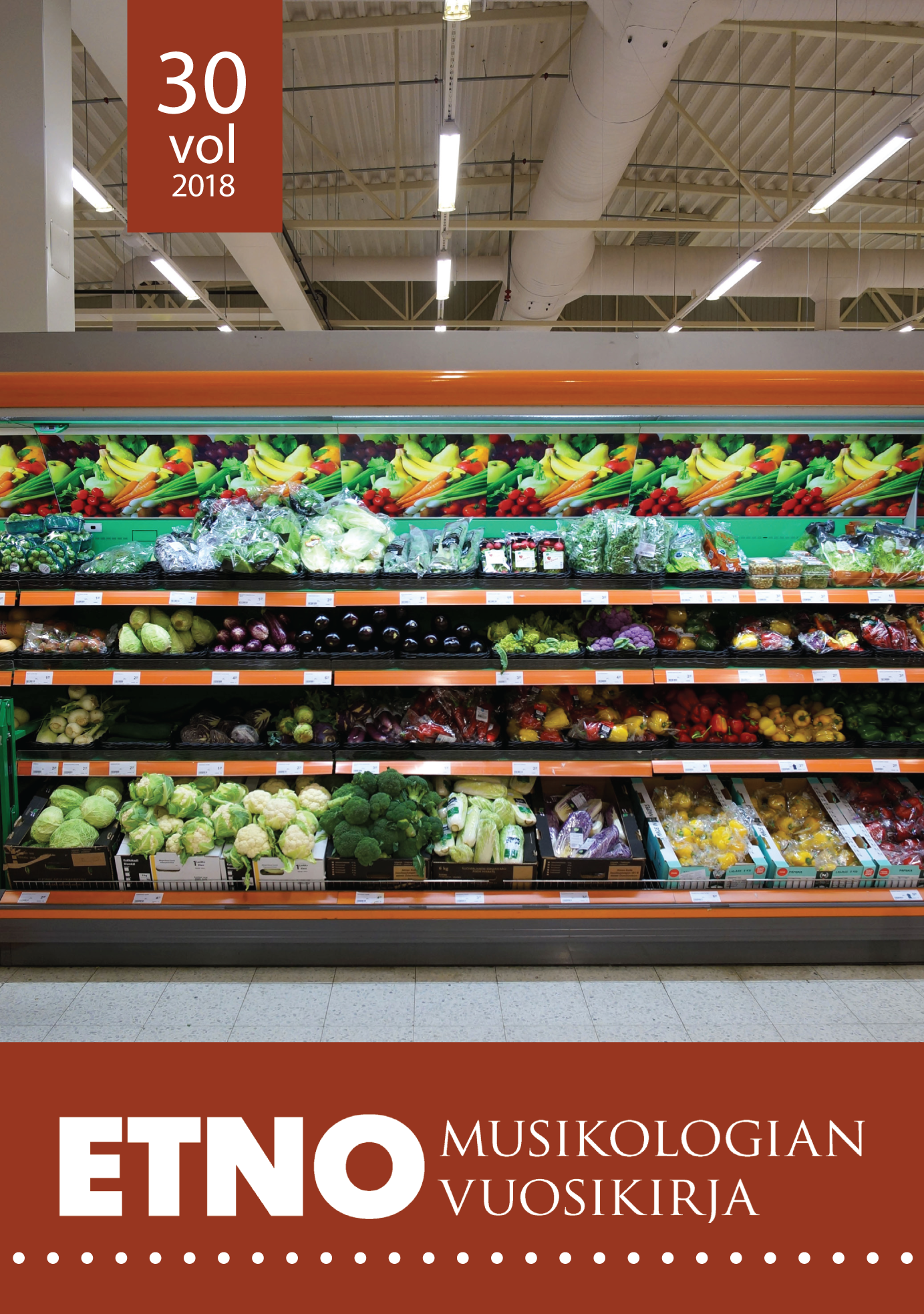Nature sounds in a hypermarket
A case study on the modified soundscape of commercial spaces in Finland
DOI:
https://doi.org/10.23985/evk.69118Avainsanat:
acoustic design, semi-public spaces, commercial spaces, ubiquitous listening, listening walks, nature soundsAbstrakti
This case study examines the use of nature sounds included in the space and sound design in the context of semi-public commercial spaces. The aim of this empirical experiment is to examine people’s perceptions and to evaluate how listening walks and group interviews as research methods can inform acoustic designing. The theoretical approach of the study derives from cultural musicology and soundscape studies. The key concepts of the study are acoustic design and ubiquitous listening. The research data consisted of listening walks and group interviews, which were analysed using frame analysis. As a result, four frames of interpretation were identified: 1) valuing background music; 2) the typical sounds of a hypermarket; 3) the sonic coherence of space; 4) soundscape as an enhancer of interaction. The study discusses how the sonic ambiance of a commercial space is sensed and how the spatial and sonic dimensions of the space can create affective experiences. The results are consistent with Anahid Kassabian’s and Brandon LaBelle’s arguments about how ubiquitous music and sound create space and collectively bind us, albeit momentarily, through their affective potential. As the research was conducted in an actual hypermarket, we were able to examine the sales figures during the research period of three weeks. We found that the sales were higher during the week the nature soundscape was played compared with previous and following weeks. This study is part of a larger research project called X that focuses on how the built environment and the visual and aural characteristics of space affect consumer behaviour and feelings of aesthetic pleasure.





